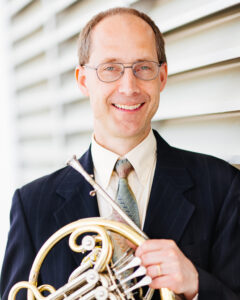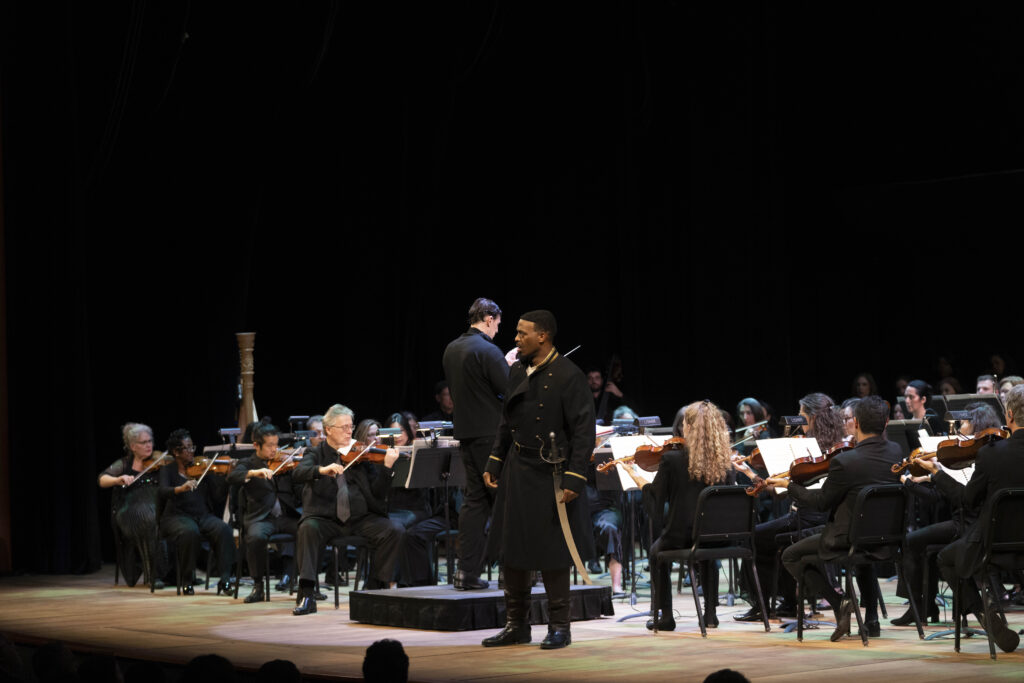
Photo Credit: Steve Wilson
The superstition lives on.
For most of the Washington National Opera’s (WNO) “Look-in” performance of Verdi’s Macbeth (a children’s performance featuring excerpts from the opera as well as discussion about all the elements that go into making it), the host had insisted she could not say the name of the title character because, as a member of the production, it would bring bad luck for her to say it. (This is a longstanding superstition in the theater world.) But in the end, she did. And five days later, on Saturday November 23, disaster struck.
In the Theater Lab, a small performance space on the terrace level of the Kennedy Center just above the opera house, some faulty electrical wiring caused a small fire, triggering the center’s fire suppression (sprinkler) system. All the water used to put out the fire then flowed downward, causing a downpour inside the opera house, where the final performance of Macbeth was supposed to take place that evening.
The production’s Banquo, company favorite Solomon Howard, happened to come in early and heard strange sounds coming from the hall. He took a video of the ongoing shower and sent it to WNO general director Timothy O’Leary and WNO artistic director Francesca Zambello, alerting them. They conferred and decided that the sold-out performance must go on, although it soon became apparent that there was no way to have the opera house ready in time—the water had not even stopped falling from the ceiling.
After investigating several alternative venues, it became clear that the best option might be the only option: the Lisner Auditorium at George Washington University (GWU), a ten-minute walk from the Kennedy Center, was scheduled to be dark on Saturday (and where fortuitously the stage had been set for Friday’s dress rehearsal of Washington Concert Opera’s (WCO) Manon Lescaut). WCO’s executive director Meg Sippey immediately supported the idea and agreed to make the necessary accommodations at the hall.
The management team faced a myriad of complications. The Lisner auditorium seats fewer than 1400 people, while WNO had sold more than 2000 tickets under a very different seating plan. There would be no way to map the individual tickets of that night’s performance to unique seats in Lisner, nor even to guarantee that every ticket holder would have a seat.
The stagehands and front-of-house staff at Lisner had the day off, and there was no certainty initially that they would be available to come in to work. Clearly the sets could not be transported and put in place, but some modicum of costumes, wigs, and props (not to mention certain percussion instruments) would be desirable to help convey the drama—but how to organize and move them?
Also, WNO would need to agree to a contract with the venue, a process that would normally take weeks. The backstage areas at Lisner, not generous to begin with, were already occupied by WCO. And while it was important to use the lighting and supertitle systems in the auditorium, it was equally important not to mess them up for WCO’s performance the next day. And, not least, the cast had been performing the opera fully staged on the large opera house stage and would now have to perform in a much smaller space, behind the back of the conductor (Evan Rogister, in his final performance as WNO’s principal conductor), with no rehearsal possible.
But a spirit of cooperation and a can-do attitude pervaded all involved. A plan was formulated to grant refunds to all requesting ticket holders while offering, on the honor system, general admission seats at the relocated performance. GWU Production Director Drew Thomas (who had once been a stagehand at the Kennedy Center opera house) did not balk at having to negotiate a rental contract in a matter of hours, nor at asking Lisner staff members to come in unexpectedly. The Kennedy Center production staff and stage crew wrangled all the necessary equipment and brought it to the new venue. Everyone pitched in without complaint, from O’Leary passing out programs and Sippey marking off some reserved seats for certain VIP attendees, to orchestra and chorus squeezing into cramped backstage areas. “It was a great testament to the community that we have in the arts,” said O’Leary. “The energy was absolutely spectacular.”
The actual performance came off without a hitch, with everyone who wanted one finding a seat. The audience did not seem to mind the absence of sets, and many welcomed the emphasis on the music brought about by the more intimate setting.

Solomon Howard as Banquo in the salvaged version of “The Scottish Play” at Washington National Opera
Photo Credit: Andrew Thomas
Despite the obvious success of this transported performance, many orchestra musicians were concerned about the state of the opera house and what it portended for our performances of The Nutcracker with Philadelphia Ballet the very next week. Some thought the hall might be shuttered for weeks or months to repair the water damage.
But the Kennedy Center management moved aggressively to address the problem. They engaged a professional emergency restoration and response team to assist in the clean-up, and 65 people worked to remove the water and dry out the hall, using wet vacs, dehumidifier units, and fans. They also installed an elaborate tenting system to focus the airflow on the affected areas and followed up with a sanitizing process. An internal review showed no signs of long-term damage, though the Center also engaged external industrial hygienists and engineers to confirm these findings. “We are committed to a full recovery from the incident and ensuring there are no lasting impacts to the building,” said Matt Floca, vice president of facilities for the Center.
And in a secondary miracle, The Nutcracker opened on time as scheduled on Wednesday. We hope that any future productions of “the Scottish Opera” will be unmarred by incident.





